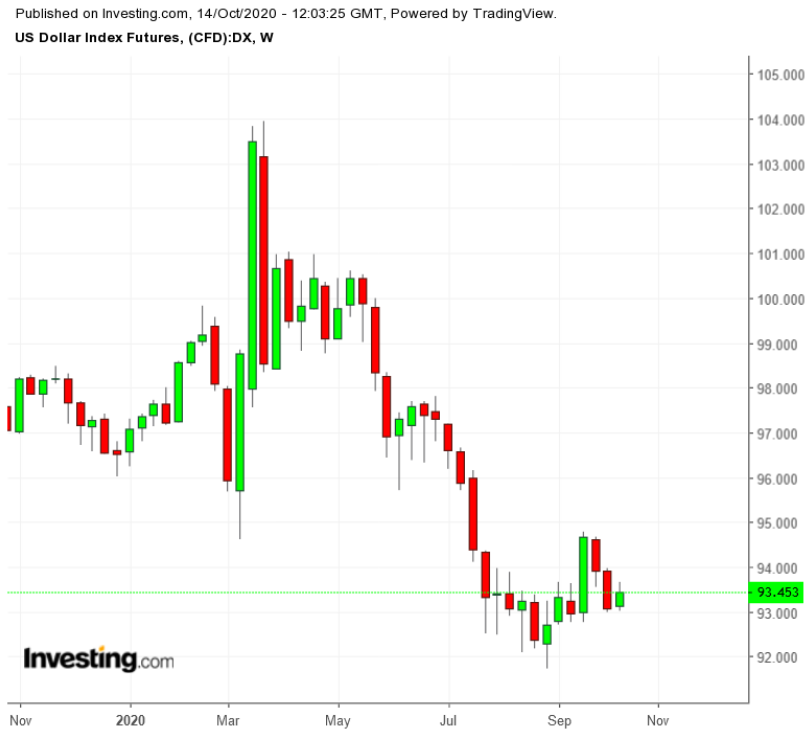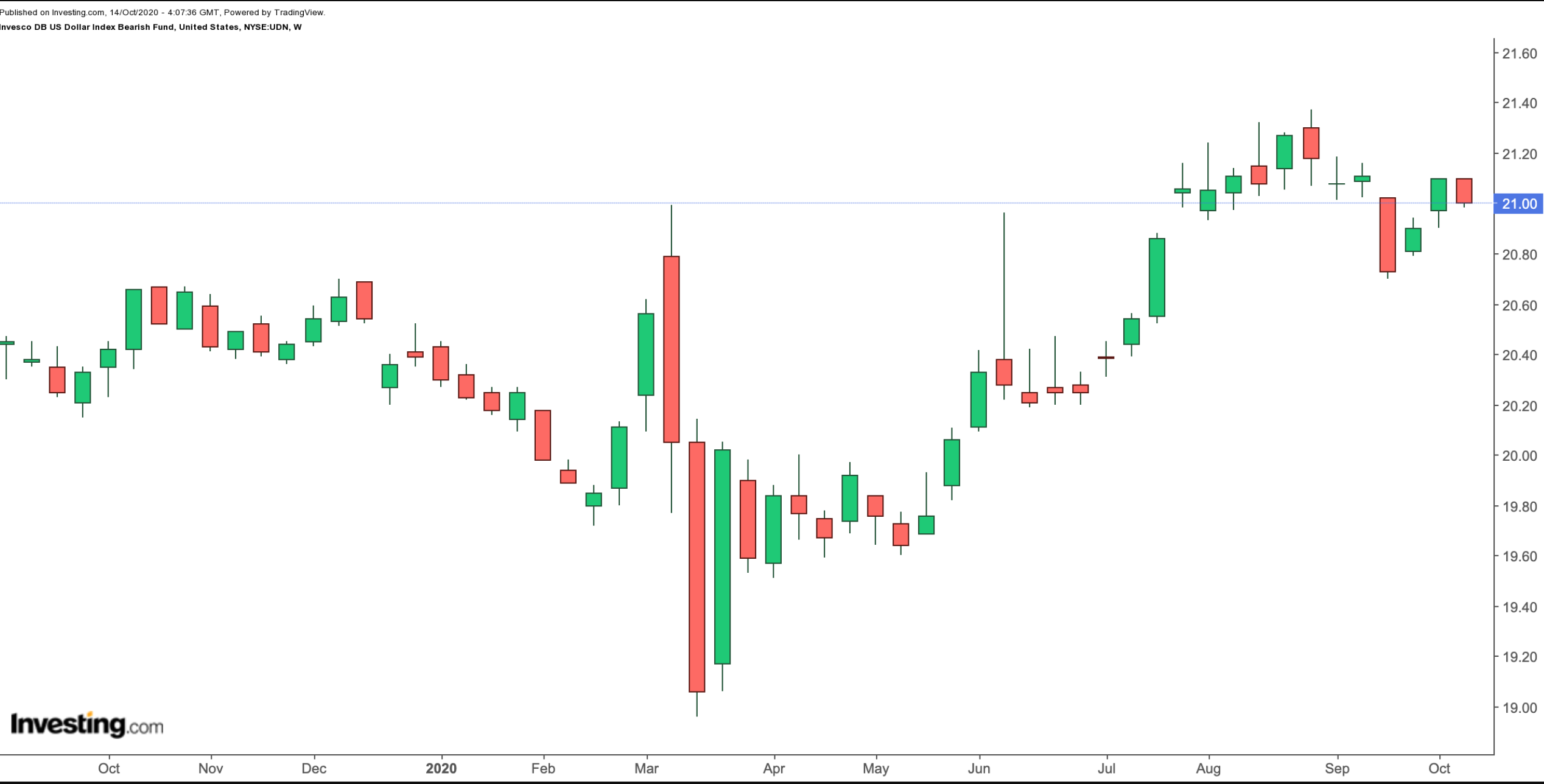Five things to watch in markets in the week ahead
The foreign exchange market is the largest and most liquid financial market worldwide. Currencies move for a range of reasons, such as economic data, interest rates and inflation levels. Traders, retail investors and business operators use currency exchange-traded funds (CETFs) for speculation, diversification or hedging. These funds have simplified the mechanics of participating in the FX market.
Fluctuations in the US dollar and other currencies have important consequences for investor returns. The USD remains the global reserve currency. The next closest FX peer is the euro. Therefore, what happens to the US dollar's value affects global citizens, businesses, national economic, monetary, and trade policies, and also most commodity prices since they're denominated in US dollars.
Currency can be a stand-alone asset class or integrated into an equity-heavy portfolio. Such integration into retail portfolios has been increasing, albeit slowly, possibly because of a knowledge gap. In a series of articles, we will introduce several of these CETFs.
We previously covered the Invesco DB US Dollar Index Bullish Fund (NYSE:UUP) and how a volatile US dollar could potentially affect equity returns in Emerging Markets. This post expands the discussion to two other currency funds.
Markets Eye The US Dollar Index
A fiat currency is valued against other currencies. In such paired assets, the value of each currency is affected by the relative health of the two countries in the pair. The US Dollar Index, on the other hand measures the value of the greenback relative to a basket of six currencies, the euro, Japanese yen, British pound, Canadian dollar, Swedish krona and Swiss franc. These currencies are used by several of the most significant US trading partners.
When the US Dollar Index goes up, the greenback appreciates against this basket of currencies. Thus, the index is a measure of the relative purchasing power of the USD.

Market sentiment tends to favor the US dollar as a safe haven asset. For instance, the recent uptick in COVID-19 infections globally has raised nervousness across the world as well as demand for the greenback, pushing its price up.
Changes in the US Dollar Index can significantly influence commodities, like gold and silver. While the USD has been appreciating in value since September, prices of these shiny metals have come under pressure.
The moves in silver have been more volatile as its price depends partly on industrial demand. However, at other times, both metals could move in sync with the US Dollar Index. Thus, it would not be easy to predict short-term moves fully.
How do moves in the dollar index affect US equity indices?
We previously looked at fluctuations in the British pound and shares in the FTSE 100 and FTSE 250 indices. Britain's leading index, the FTSE 100, usually declines when the value of the British pound goes up significantly.
Similarly, in simple terms, a strong USD means weaker prices for broader US indices. While US stocks were making highs in August, the US Dollar Index was hitting multi-year lows. Then, while the index began to rise in September, broader US markets gave up some of their recent gains. However, the actual effect on the shares of a given company could be much different. It would depend on how much of its business is overseas and how currency moves might affect its cost structure.
When the US dollar depreciates, US exports tend to become more competitive in global markets. As a result, if a company relies on exports, its share price may benefit from a weak dollar. However, many multinational companies have a hedging strategy against large currency moves. Thus, the net effect on the financial metrics of the businesses could well be negligible.
In the coming weeks, in addition to regularly released economic data, several significant events may affect the USD’s value. They include an agreement on a second stimulus bill, developments around a potential vaccine against the pandemic, further lockdowns worldwide as a result of the efforts to contain the second wave, as well as the volatility around the US Presidential election.
1. Invesco DB US Dollar Index Bearish Fund
Current Price: $21.00
52-Week Range: $18.96 - $21.37
Expense Ratio: 0.78% per year
The Invesco DB US Dollar Index Bearish Fund (NYSE:UDN) tracks an index that is short US Dollar Index futures contracts which trade on the Intercontinental Exchange. Thus, UDN moves higher when the value of the dollar index declines.

How could UDN find a place in a portfolio?
Traders could use the fund to speculate on the moves in the US Dollar Index. Those who are bearish on the greenback could go long UDN. For example, speculators who expect a poor showing for the USD against the euro may consider buying UDN.
It could also act as a proxy for moves in broader US indices. Those who are bullish on those indices may potentially be expecting the greenback to depreciate. Again, they could buy UDN.
Speculators who are betting on interest rate moves may consider using UDN. All else being equal, if interest rates in a country decline, the value of its currency goes down, too. For instance, UDN could be utilized in conjunction with other ETFs appropriate for a low interest-rate environment.
A weaker USD is typically favorable for emerging market (EM) assets. Those who believe EMs may go up, could decide to have UDN exposure.
Investors with positions in commodities may use UDN as a potential hedge, based on the view that most commodities and the greenback are inversely related.
Finally, business owners, like exporters or importers, who have USD currency exposure may decide to hedge potential currency risk with UDN. However, structuring the perfect hedge of foreign currency cash flows over long periods of time can be quite complex. Frequent portfolio monitoring would typically be required.
Bottom Line
Currency ETFs have made the foreign exchange market more accessible for many people. It is possible to buy and sell a currency fund similar to an equity ETF, whose value depends on companies when investors bet on businesses delivering returns on investment.
However, currencies are not stocks, and the moves in currencies can be rapid, volatile and often unpredictable. It is important to appreciate the dynamics of forex markets, especially the effects of macro economic and political events, before jumping in.
In addition to UDN, there are other currency ETFs of interest.

Market participants bullish on the Japanese yen could consider buying the Invesco CurrencyShares® Japanese Yen Trust (NYSE:FXY). The yen is one of the most widely traded currencies globally.
In recent years, many traders have bought the yen as a safe haven, when they feared global equities could be about to fall. The yen's potential strength may mean global risk aversion.
While keeping their long equity positions, investors could decide to buy FXY as a portfolio hedge. For example, a trader could have a vertical call spread in the currency ETF as a way to express a bias.
In weeks ahead, we plan to cover other currency funds that may also be of interest to readers.
